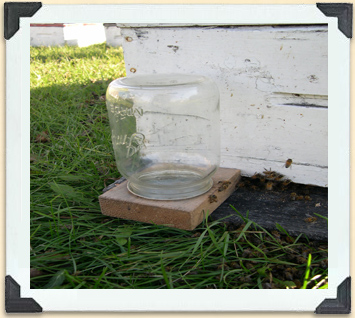The Keeper

A Boardman bee feeder.
© University of Manitoba
Feeding
In spring and fall when plants produce less nectar, beekeepers feed their colonies a syrup made from sugar and water that bees can easily convert into honey for winter storage. They provide the syrup through a feeder within each hive or a common feeder that serves a group of hives.
Beekeepers can supplement the syrup with medications that help prevent or treat disease.





